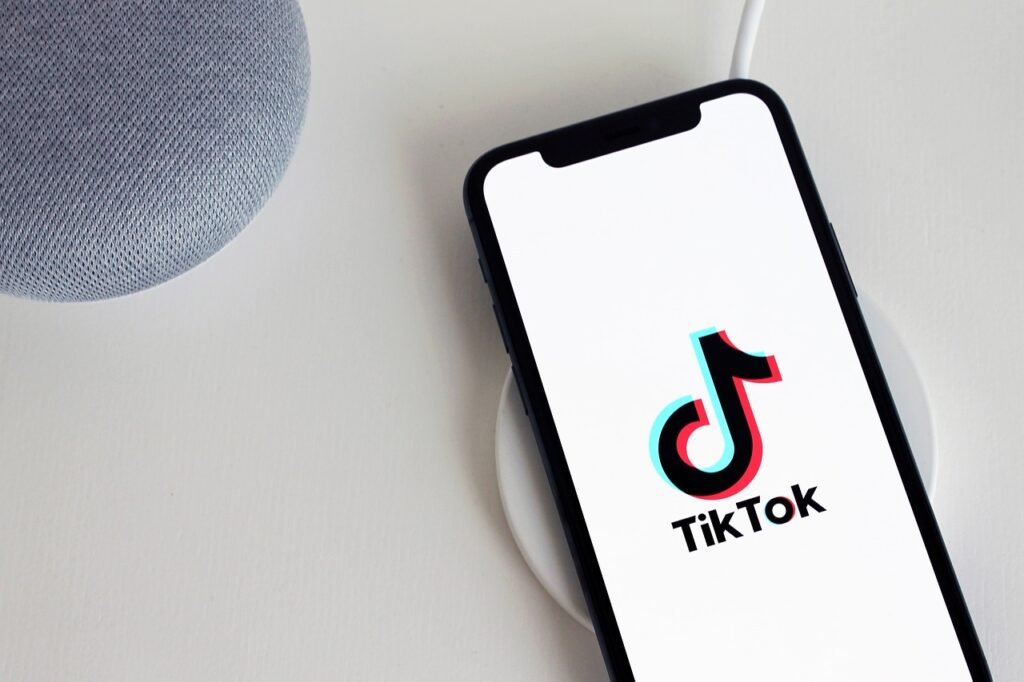In marketing, trends come and go at breakneck speed. From AI-powered content creation to viral video platforms, there’s always a new “must-try” tactic or tool. But for lean marketing teams with tight budgets, jumping on every trend is neither practical nor sustainable. It can quickly drain resources, sidetrack core efforts, and yield disappointing results if the trend doesn’t align with your brand’s specific needs.
Testing new trends on a budget isn’t about adopting every flashy tool or channel. It’s about knowing how to evaluate, test, and scale only those trends that bring true value to your business. In this guide, we’ll explore a strategic approach to testing trends without overspending, helping your marketing team stay agile, smart, and focused on what really works.
Step 1: Start with Clear Goals and Objectives
Define What You Want to Achieve
Before you even think about trying a new trend, it’s essential to know what you hope to accomplish. Are you aiming to boost engagement, drive more conversions, enhance customer experience, or improve your team’s efficiency? Having a clear purpose keeps your testing focused, allowing you to decide if a trend is worth exploring.
For instance, if your goal is to increase engagement on social media, a trend like TikTok challenges might be worth testing. But if your goal is lead generation, you may be better served by testing a trend in personalized email marketing. Start with a solid understanding of what your team needs to achieve, and let that guide your decision-making.
Set Specific, Measurable Goals for the Test Phase
Once you have a general objective, break it down into specific goals you can measure during the test. These should be realistic, achievable benchmarks that help you assess the trend’s impact on your core objectives. For example, if you’re testing a new email marketing trend, set a target click-through rate or open rate to measure its effectiveness.
Clear metrics keep you accountable and focused, providing a clear “yes” or “no” on whether the trend aligns with your goals. Plus, measurable goals make it easier to justify further investment if the trend shows promise or pivot if it doesn’t deliver.
Step 2: Conduct Research to Understand the Trend

Get to Know the Trend’s Capabilities and Limitations
Every new trend has its strengths and weaknesses. Spend time researching the trend, understanding what it’s designed to do, and identifying any limitations. Look for case studies or testimonials from brands that have tried it and pay attention to any insights that highlight challenges or potential barriers.
For example, if you’re looking at AI-driven content generation, research the types of content it handles well and where it might fall short (e.g., creativity or brand voice). Understanding the limits upfront can prevent frustration and help you set realistic expectations for your test phase.
Identify Relevant Use Cases in Your Industry
Not every trend is universally applicable. Some may work exceptionally well in certain industries but not in others. Look for examples within your own industry or similar fields where the trend has been used successfully. Are there specific elements or approaches that have worked well? Are there pitfalls you should avoid?
For instance, if you’re a B2B company, influencer marketing on TikTok might not make sense, but thought leadership webinars or LinkedIn outreach could be better fits. By identifying relevant use cases, you gain insight into how best to adapt the trend for your own goals and audience, saving both time and budget in the testing process.
Step 3: Plan a Budget-Friendly Pilot Program
Start Small to Minimize Risk
One of the biggest mistakes in trend testing is going all in from the start. For a lean marketing team, it’s essential to begin with a small, budget-friendly pilot program that limits financial and time commitments. A pilot lets you test the trend’s potential impact without risking too much on an unproven approach.
For example, if you’re exploring Instagram Reels as a new engagement channel, start by creating a couple of short, simple videos. Monitor the reaction and engagement levels before committing to a full campaign. A small pilot provides valuable data without major resource strain, allowing you to experiment and learn without breaking the bank.
Use Freemium Tools and Minimal Resources
Many digital tools offer freemium versions that give you basic access to essential features without requiring a full paid subscription. For lean teams, these free versions can provide a low-cost way to test out a trend before upgrading. Look for tools that align closely with your test objectives and offer the core features you need.
For example, if you’re testing an email personalization trend, platforms like Mailchimp offer free versions with basic segmentation and automation capabilities. If the test phase shows positive results, you can decide whether the premium features would provide enough added value to justify the cost.
Step 4: Track Key Metrics and Monitor Performance

Select Relevant KPIs Based on Your Goals
During the pilot phase, use specific KPIs to track the trend’s effectiveness. Focus on metrics that align with your initial goals. For instance, if your objective is to increase brand awareness, metrics like reach, impressions, or social shares may be key indicators. If it’s about improving engagement, focus on click-through rates, comments, or likes.
For example, let’s say you’re testing a content repurposing trend by turning blog posts into short videos. Track video views, engagement rates, and any increase in traffic to the original blog posts. The right KPIs allow you to objectively evaluate the trend’s impact, providing clear evidence of its value or lack thereof.
Gather Both Quantitative and Qualitative Feedback
Metrics tell part of the story, but qualitative feedback from your team and audience adds valuable context. Talk to team members involved in the pilot to understand how the trend impacts their workflow or how the tool performs. If possible, gather feedback from your audience to see how they feel about the content or approach.
For instance, if you’re trying out a chatbot for customer service, ask the customer support team for feedback on how well it assists customers, if it saves time, and whether it enhances or complicates the user experience. This feedback provides insights that data alone can’t capture, helping you make a more informed decision.
Step 5: Assess the Trend’s Feasibility for Full Implementation
Evaluate Resource Requirements for Scaling
If the trend performs well in the pilot phase, the next step is to assess its scalability. Consider whether you have the budget, time, and personnel to sustain or expand this trend. Some trends require significantly more resources when scaled, which can limit their practicality for lean teams.
For example, if you’ve had success with a new video marketing trend, consider whether you have the resources to produce high-quality videos regularly. Scaling can mean increased costs in terms of production, editing, and distribution. By identifying these requirements, you ensure that you’re only committing to trends that are feasible long-term.
Weigh the Long-Term ROI Potential
Not every trend is built for long-term use, and some may only provide temporary benefits. Evaluate the trend’s potential to deliver value over time. Does it offer unique advantages that align with your business model, or is it likely to become outdated quickly? Trends that have a clear, lasting impact are usually worth the investment, while those with limited shelf life may not be worth expanding.
For instance, if the trend is a seasonal one, like a social media holiday challenge, it might be useful to revisit it only when it’s timely rather than investing in year-round adoption. Knowing the long-term potential helps you make a choice that’s both strategic and budget-conscious.
Step 6: Stay Agile and Ready to Adapt
Remain Open to Iteration
Even successful trends may need adjustments to maximize their impact. If the pilot reveals areas for improvement, be prepared to tweak your approach. Agile testing allows you to refine the trend to better fit your goals, audience, or brand voice without discarding it altogether.
For example, if your pilot shows that certain types of content resonate more with your audience, refine your focus on those topics. Similarly, if one segment of your audience responds better than others, adjust your targeting accordingly. Iteration based on real insights ensures that you’re making data-driven decisions rather than relying on assumptions.
Be Ready to Pivot if Results Don’t Meet Expectations
Not every trend will deliver results, and that’s okay. Knowing when to move on is a key part of testing on a budget. If the pilot doesn’t show the expected impact, be prepared to pivot without regret. There’s value in discovering what doesn’t work, as it keeps you from overspending on ineffective tactics.
For instance, if you test a chatbot and find it frustrates customers more than it helps, acknowledge the insights gained, retire the tool, and redirect your resources. Lean marketing teams benefit from a nimble approach that emphasizes efficiency over stubbornly sticking with underperforming trends.

Related: Check out our free tools:

Step 7: Document Lessons Learned for Future Testing
Record Key Insights and Outcomes
Each trend test offers valuable learning opportunities, so be sure to document your findings. Note what worked, what didn’t, and any surprising insights that could inform future decisions. This documentation builds a reference library for your team, allowing you to approach future trend testing with more knowledge and clarity.
For example, if you discover that video content significantly outperforms text on certain platforms, document this insight. The next time a new video trend emerges, you’ll already know that your audience responds well to video, making it easier to decide whether it’s worth exploring.
Share Findings Across the Team
Testing trends isn’t just about achieving results—it’s also about fostering a culture of learning and adaptability. Share your findings with the broader team, even if they weren’t directly involved in the pilot. By sharing insights, you create a knowledgeable team that can spot potential opportunities or risks more easily in the future.
For instance, if a pilot on social media storytelling didn’t yield expected engagement, share why it didn’t work and what your team learned. These insights can help other team members avoid similar mistakes and stay informed about your brand’s evolving strategy.
Step 8: Integrate Successful Trends into Your Core Strategy

Develop a Scalable Strategy for Trends that Prove Successful
If a trend shows strong potential in the pilot, it’s time to develop a scalable strategy for full implementation. Identify which aspects of the pilot need to be scaled, how frequently you’ll implement the trend, and which resources are needed to support it on a larger scale.
For example, if a short-form video trend on Instagram Reels gained significant engagement, build a content calendar specifically for video production. Determine posting frequency, assign roles, and set a budget to support ongoing video content. Integrating the trend into your core strategy allows you to maximize its impact and create consistent, valuable results.
Continue to Monitor and Optimize Performance
Successful trend adoption doesn’t end with implementation; it’s an ongoing process. Regularly monitor the trend’s performance and remain open to adjustments as needed. Keep tracking your KPIs and gathering feedback to ensure the trend continues to deliver value over time.
For instance, if engagement on a trend starts to plateau, test small changes like content style, posting time, or targeting adjustments. Continuous optimization ensures that your investment stays effective, providing sustained results that justify the time and budget spent.
Step 9: Foster a Culture of Learning and Innovation
Encourage Team Collaboration and Open Communication
Testing trends successfully, especially with a lean budget, requires an environment where team members feel empowered to share insights, ideas, and constructive feedback. Encourage open communication about what’s working, what’s not, and what could be improved in future trend tests. By fostering a collaborative atmosphere, you allow your team to bring their unique perspectives to the table, often leading to innovative solutions and ideas that make trend testing more effective and efficient.
For example, hold a monthly meeting or informal discussion where team members can discuss trends they’ve observed, share insights from recent tests, or even propose ideas for new pilot programs. This collaborative approach not only supports a unified strategy but also boosts morale, as team members feel their input directly impacts the company’s marketing direction.
Make Continuous Learning Part of Your Strategy
For a lean marketing team, staying updated on trends and gaining new skills is essential to remaining competitive. Encourage your team to invest time in learning about emerging tools, platforms, and methodologies. Provide access to free or low-cost resources, like webinars, online courses, or industry blogs, that can keep them informed without stretching the budget.
For instance, platforms like HubSpot, SEMrush, and Google offer free resources, certifications, and webinars on the latest marketing techniques and tools. Regular learning sessions keep your team sharp, aware of current trends, and ready to experiment when the right opportunity arises. A culture of learning enables your team to approach new trends with a strong foundational understanding, making your testing more impactful and reducing costly errors.
Step 10: Revisit and Refine Your Testing Process Over Time

Regularly Assess Your Testing Framework for Effectiveness
Your testing framework should be as agile as your approach to trends. As your team gains experience with testing new ideas, take time to assess and refine your framework based on what you’ve learned. Look at the steps that worked well and those that could be more streamlined or effective. Are there specific KPIs that consistently offer valuable insights? Are there parts of the process that seem redundant or overly time-consuming?
For example, if your team finds that certain types of trends (like social media tools) require less testing time to show results than others (like SEO tools), adjust your framework to account for this. Shorten the test period for trends that yield quick results, while giving more time to those that require a longer window to show value. Tailoring your framework based on your team’s experience allows for a more efficient and productive testing process over time.
Document Changes and Create a Knowledge Base
As your testing framework evolves, document every update and keep a centralized knowledge base accessible to the entire team. A knowledge base serves as a record of what’s been tested, what worked, what didn’t, and the reasoning behind each decision. This is especially useful for new team members, as it provides a ready reference to the company’s approach to trend testing.
For example, create a simple document or internal wiki where team members can view past test results, see examples of successful (or failed) trends, and understand the criteria used to evaluate them. By documenting lessons learned, you create a resource that not only saves time but also builds institutional knowledge, strengthening your team’s ability to make smarter, quicker decisions.
Step 11: Integrate Feedback Loops with Customers
Involve Your Customers in the Testing Process
One of the best ways to test a trend’s effectiveness is by involving your customers directly. Their feedback provides valuable, real-world insights that help you understand how they interact with new tools, content formats, or engagement methods. Consider using surveys, polls, or feedback forms to get their take on recent changes or experiments.
For example, if you’re testing a new type of personalized email or a chatbot on your website, send a quick survey to a segment of customers who experienced it, asking if they found it helpful, relevant, or engaging. Customer insights can reveal unexpected challenges or advantages, guiding your decisions on whether to scale or drop the trend. Keeping a customer-centered focus ensures your efforts truly resonate with the people who matter most.
Use Social Listening for Organic Customer Feedback
Social listening tools can offer another layer of valuable customer insights without formal surveys. Track conversations around your brand, campaign hashtags, or industry-related keywords to understand how customers feel about a new trend organically. This method often surfaces genuine feedback you may not have received otherwise, as customers express their opinions in a natural, unfiltered way.
For example, if you’re experimenting with interactive content on social media, use a social listening tool to monitor engagement and see if customers are sharing, commenting, or mentioning your content in their own posts. Social listening gives you real-time insights into customer sentiment, helping you gauge the trend’s effectiveness quickly and adjust as needed.
Final Thoughts: Testing Trends with Purpose and Precision
For lean marketing teams, trend testing isn’t about following every new idea—it’s about carefully choosing which trends align with your goals and testing them in a way that conserves resources. By setting clear objectives, starting small, tracking performance, and iterating as needed, you can identify trends that genuinely benefit your brand without unnecessary spending.
Remember, the goal is to strike a balance between agility and purpose. When you approach trend testing strategically, you can keep your brand fresh, stay competitive, and drive impactful results without exhausting your budget. Testing trends on a budget is possible, and with the right approach, it can lead to valuable, sustainable growth that fuels your marketing success in the long term.
READ NEXT:
- Are Vanity Metrics Killing Your Marketing Efficiency? Here’s What to Track Instead
- Pinpointing Digital Marketing ROI: Why Your Metrics Aren’t Telling the Full Story
- Unlocking Real ROI in Digital Marketing: The Hidden Costs Draining Your Budget
- How Misaligned Marketing Funnels Are Blocking Your ROI Potential
- Best Digital Marketing Agency In Santa Ana, California
- Best Digital Marketing Agency In San Francisco, California





















